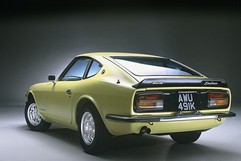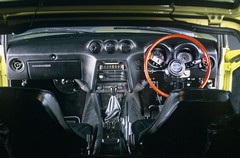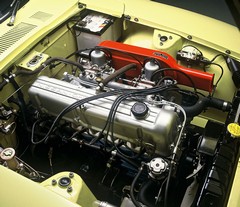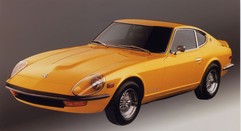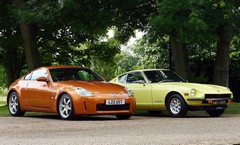PH Heroes: Datsun 240Z
David Vivian's take on a car that re-wrote the GT rule book
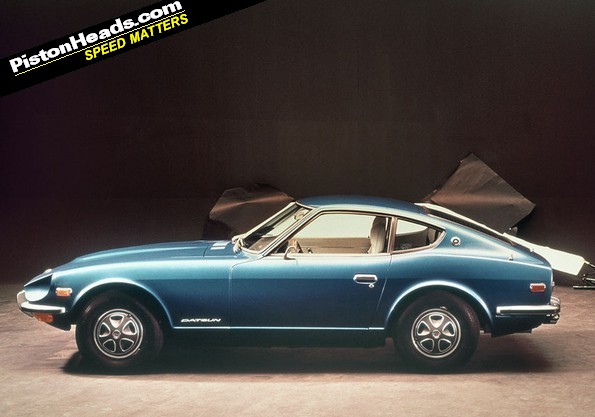
Up to then Nissan, a much smaller company than it is today, had dabbled with fast-lane fare but was notable mostly for producing some of the world's least interesting family runabouts and pick-ups. So when, in '69, it launched a car as similar to every previous Nissan as a shark is to an inflatable rubber duck, it might as well have landed from another planet. In Japan it was called the Fairlady Z, proving that Nissan's flair for giving cars inappropriate names had also hit a new high. But for its prime market, the US, and the rest of the world it was renamed the Datsun 240Z and, almost overnight, it changed the way we think about Japanese cars forever.
True, it was pre-dated by the Honda S800 (ahead of its time but terminally titchy) and the exotic, low volume Toyota 2000GT (an ill-fated project that actually began as a Nissan/Yamaha collaboration and was rescued by Toyota when the 2.0-litre twin-cam Yamaha engine didn't fulfill Nissan's expectations). These were just quirky curiosities compared to the 240Z, though, which rolled into the soft autumnal light of an October day as a fully-formed and beautifully resolved classic that, miraculously, appeared to combine the best bits of several European sportscar icons with the basic front-mounted-straight-six-driving-rear-wheels layout of America's seminal sportscar, the Chevrolet Corvette.
It seems that the fruition of the nascent Nissan sportscar as a very pretty and technically sophisticated Toyota had galvanised Katayama into inspired action. He wasted no time formulating a blueprint for a 'personal GT' that would slot in below the hallowed 'Vette but above 'boutique' European sportsters like the Opel GT, MGB GT and Porsche 914, and deliver a genuine two-fisted driving experience in a thoroughly modern, good looking and, above all, affordable package. In truth, the 'hairy-chested' aspect of its character wasn't a million miles removed from the Austin Healey 3000's, a car close to Americans' hearts but even closer to the retirement home. It was the fusion of more aspirational elements, though, that made the 240Z an instant sensation and gave notice of something the Japanese would become renowned for: artful plagiarism.
Which is why the first thing you notice is the long, low bonnet complete with a power bulge, just like an E-type Jag's. The fastback roofline swoops down to a sharply truncated tail that, from some angles and in the right light, looks teasingly Ferrari-esque. Inside, the seating is low slung and leanly padded in the best sportscar tradition, while the dials of the instrument display are sunk into deep cowls, just as they would have been in a '60's Alfa Romeo. Its stubby gearlever has a wooden knob and a baggy gate frock that makes it look even shorter and more 'snickety'.
And that engine. Who'd guess it's the 1595cc single overhead cam four from Nissan's dull 510 saloon of the day with an extra couple of cylinders welded on the end? In the 240Z it's a lusty, throaty 2.4-litre straight six thoroughbred that develops 151bhp and 146 lb ft of torque. All right, outputs that seen laughably puny by today's standards but, at the end of the '60s, potent enough in a car that weighed just over 1000 kilos to propel it to 60mph in 8.0sec, the ton in 25.6sec and 125mph flat out - quicker than a Triumph TR6 or a Porsche 911T.
It doesn't feel slow, even now. A respectably flat torque curve and five neatly-stacked ratios team up to give the 240Z decent in-gear punch and bags of flexibility, which is just as well because the engine's throbby roar becomes almost intolerably harsh and thrashy above 6000 revs, despite the 7000rpm red line.
The gearbox has a chunky, mechanical feel with short throws and a slick enough action but it doesn't like to be rushed. Much the same goes for the car itself. Adopt the full banzai mindset and you can almost hear the Datsun groan. But then Katayama never meant to build a sportscar, more a junior GT. By modern standards, the steering is a big disappointment. At a mid-speed stroll its responses are slow and dull, making the car feel torpid and only half awake - what Sylvester Stallone would be to crisp diction. The ride's good, though, the all-independent suspension and tall, squidgy tyres smothering sharp-edged ridges and broken surfaces. Initially, grip (hardly cheek-rippling), body control and damping seem distinctly underwhelming but the harder you drive the Datsun, the more composed, fluent and confidence-inspiring it seems to become; even the steering wakes up to a degree and sheds much of its numbness and lethargy.
So, the 240Z set the agenda for a generation, re-booting the simple, old-fashioned, unvarnished pleasures and brutish, straight-ahead appeal of older classics like the E-type and Austin Healey 3000 but with the reliability and integrity of Japanese engineering. By 1973, Nissan was shipping 50,000 240Zs a year to the US. In the following years, it evolved into the larger, heavier and more powerful 260Z and 280Z and then the still heftier ZX series, racking up record sales but straying ever further from the uncomplicated charms of the original.
What' s perhaps most remarkable about driving the 40-year old 240Z again is how close it is in character to the current 370Z. The 370 goes and stops harder and can negotiate long sweeping bends travelling faster than the 240Z could manage on the straight. But the striking good looks, compact size and tough, unfrilly personality are almost perfectly aligned. As is its chassis' predictable, forgiving balance and clear lines of communication. Seems like Katayama hit the bullseye first throw and that beefy, honest, uncomplicated, old school entertainment still sells.
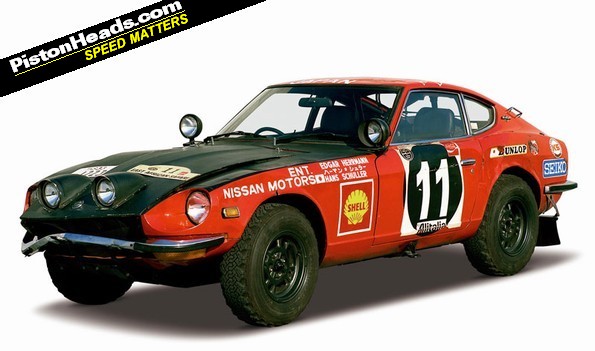
Would be a great candidate for a retro-refresh - modern steering, suspension and brakes, and would the engine bay fit a Skyline straight six?

Gassing Station | General Gassing | Top of Page | What's New | My Stuff


